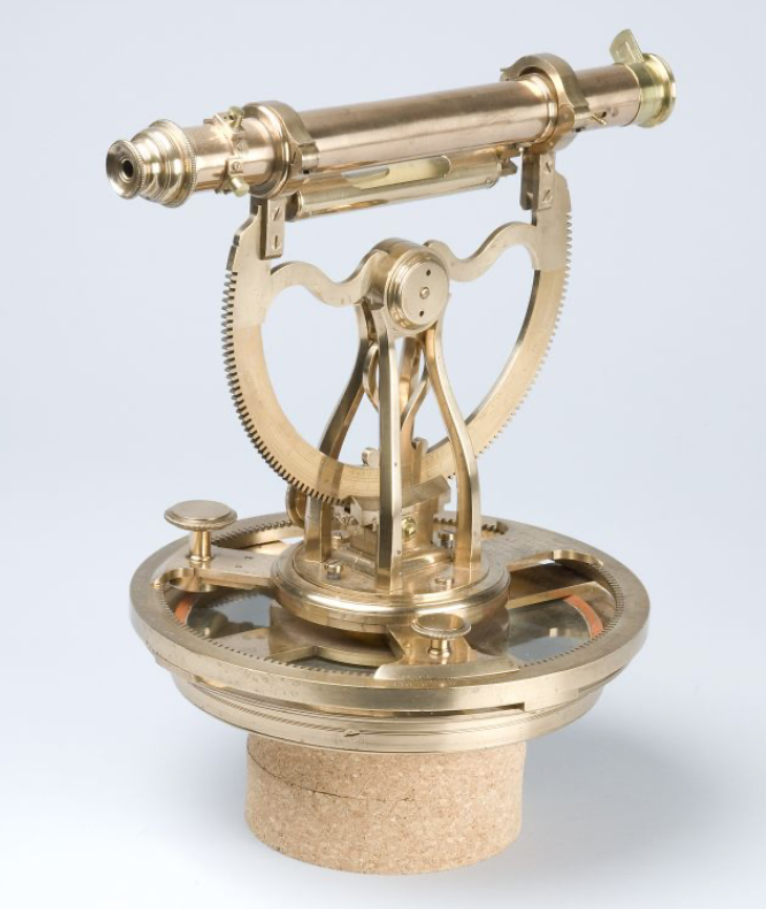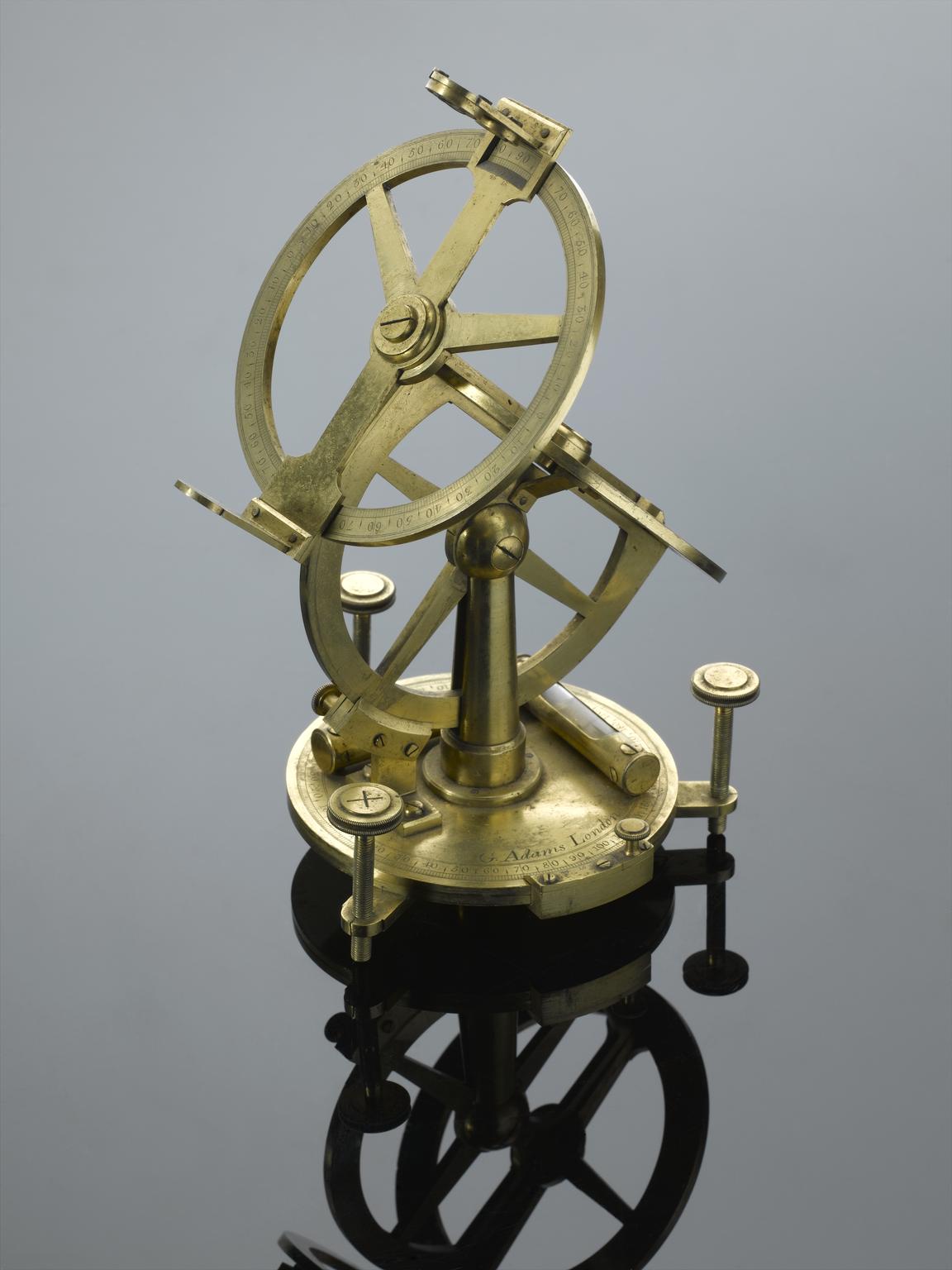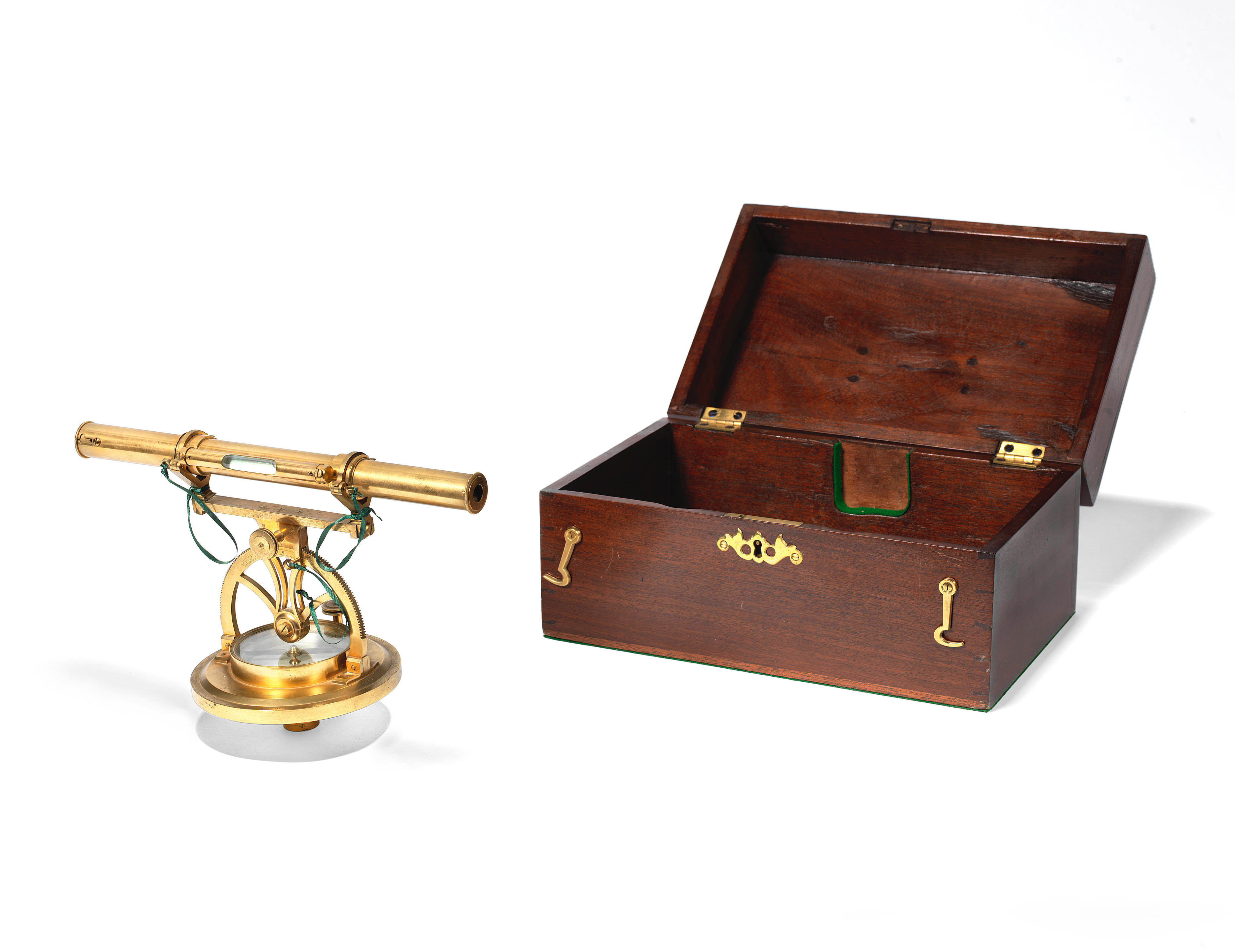
A Circa 1770 State of the Art Theodolite Made by George Adams I
The Adams Family of Makers
George Adams I and his son George Adams II were two of the most famous makers of mathematical instruments in the 18th century. The made a wide variety of fantastic instruments - highly prized by collectors for many years now. George Adams I had another son who was a skilled instrument maker, Dudley Adams. But Dudley did not have the skill level that his father or brother had, and Dudley put the Adams firm into bankruptcy in 1817. Instruments made by Dudley Adams are still quite collectible - they just don't display the same extraordinary skill level that instruments made by George I and George II display.
George Adams I (c. 1709–1773) was an English instrument maker and science writer. His son George Adams II, who carried on the business, was also known as an instrument maker and optician. George Adams I was Mathematical Instrument Maker to King George III of Great Britain.
He was the eldest surviving son of Morris Adams, a cook, and his wife Mary, and was baptised in 1709. He was an apprentice to instrument makers, James Parker who died, and then Thomas Heath. He went into business in 1734, in Fleet Street, London.
Adams authored numerous books:
- Treatise Describing the Construction and Explaining the Use of New Celestial and Terrestrial Globes (London: 1766)
- Micrographia Illustrata, or the knowledge of the microscope explained (1746), which included "a translation of Mr. Joblott's observations on animalculæ", and had four editions to 1771. Henry Baker attacked this book, on grounds of plagiarism.
- The Description and Use of a new Sea-quadrant for taking the altitude of the sun from the visible horizon (1748).
- The Description and Use of the Universal Trigonometrical Octant, invented and applied to Hadley's Quadrant (1753).
George Adams II (1750–1795) was an English scientist, optician and scientific writer. He was mathematical instrument maker to King George III of Great Britain, succeeding his father George Adams I in the post. He also made globes.
Around 1770, Adams invented the lucernal microscope, a type of projection microscope where the image is projected on a screen by a large oil lamp, as to make it easier to draw or trace the image.
In politics Adams was a Tory, and as such was received with favour at court by George III. He died 14 August 1795, at Southampton, and was succeeded in his business and in the post of mathematical instrument maker to the king by his brother, Dudley Adams.
Adams wrote elementary scientific works, and on the use of mathematical instruments. He often combined religious with a scientific content, against, according to the Gentleman's Magazine, the "growing errors of materialism, infidelity, and anarchy". He started writing at a young age, and developed a love for it. His main interests were science and mathematics. His works were:
- An Essay on Electricity, to which is added an Essay on Magnetism (1784).
- Essay on electricity. London: Robert Hindmarsh. 1787.
- Essays on the microscope. London: Robert Hindmarsh. 1787.
- An Essay on Vision, briefly explaining the fabric of the eye (1789).
- Astronomical and geographical essays. London: Robert Hindmarsh. 1790.
- A Short Dissertation on the Barometer (1790).
- Geometrical and Graphical Essays, containing a description of the mathematical instruments used in geometry, civil and military surveying, levelling and perspective (1790).
- Lectures on Natural and Experimental Philosophy, in five volumes (1794).
For some of Adams's books, plates were published separately, and most of them had more than one edition. The book Geometrical and Graphical Essays, containing a description of the mathematical instruments used in geometry, civil and military surveying, levelling and perspective (1790) and accompanying plates to the book are of particular interest to collectors of surveying instruments. The book paints a very good picture on how lsurveyors used late 18th century instruments, and the plates show the state of the art instruments offered.
Dudley Adams (1762–1830) Maker of scientific instruments and globes; son of George Adams I (c.1709-1773) and younger brother of George Adams II (1750-95); set up in business in 1788 at 53 Charing Cross, but in 1796 took over the family business at no. 60 Fleet Street (at the sign of Tycho Brahe's Head); bankrupt, 1817; 1820, took over a 'medico-electrical therapeutics' business in St Paul's Churchyard, moving in 1822 to 22 Ludgate Street; published tracts on electricity.
Other Adams Instruments
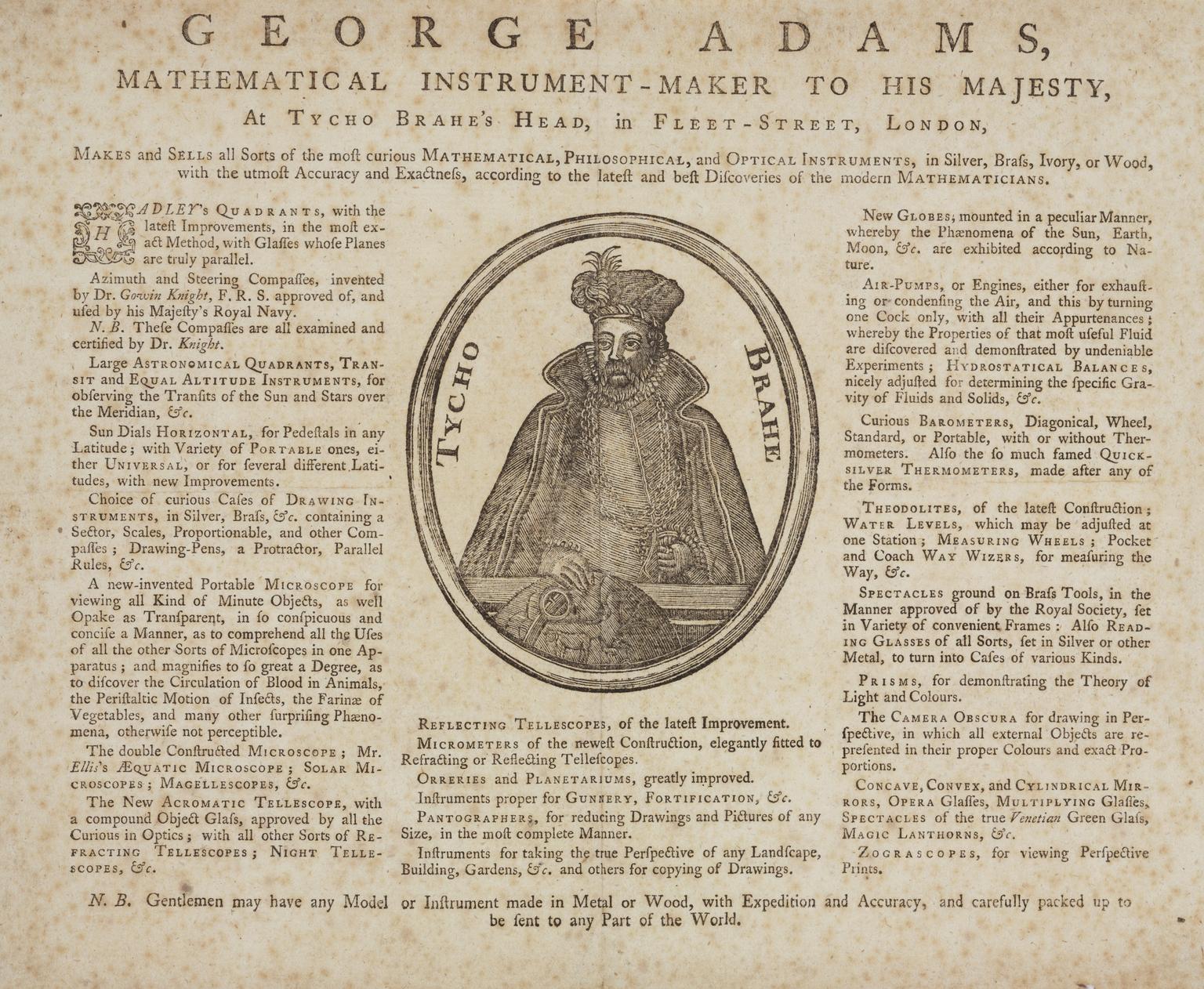
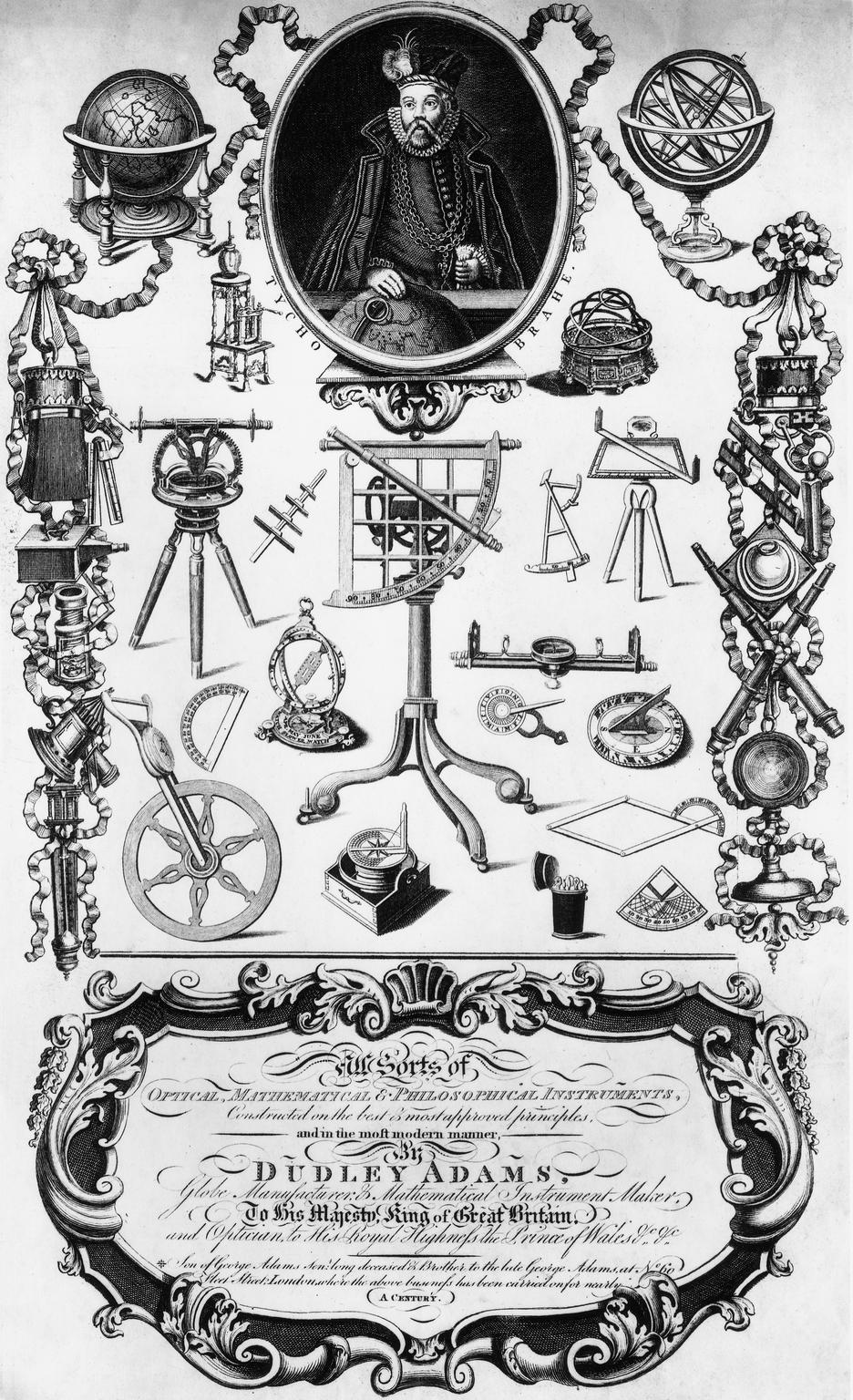
© 2020 Russ Uzes/Contact Me
